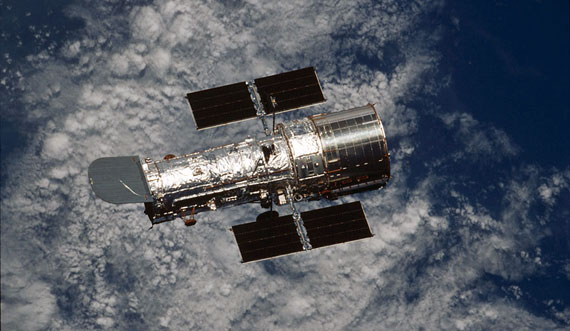Securing observing time on the Hubble Space Telescope is a highly desirable and extremely competitive process for astronomers. There are hundreds more projects submitted than can be accommodated, and the selection criteria is stringent.
ş¬Đ߲ݴ«Ă˝ astronomy professor and collaborator Tracy Beck of the though, were recently awarded 12 orbits, or about 9 hours worth of observing time, to collect data for their investigations into the formation of binary stars that might eventually host their own planetary systems.
The clarity of the images the astronomers will receive from Hubble will be of enormous value to their research, allowing them to study in great detail the interactions between the forming binary stars and nearby dust and gas that might be evolving into a planetary system.
Bary uses a Star Wars movie reference when explaining a binary system that harbors planets. “Luke Skywalker’s home planet, Tatooine, is a great example of a planetary system with two host stars. In the movie, they show two suns setting on the horizon at dusk. That kind of planetary system, where you get a Luke Skywalker kind of sunset, is exactly the type of system we are studying. Only we are observing it in the midst of formation.”
The data Bary and Beck will be collecting in January are photographs of the gas and dust in the rings surrounding young — in astronomical terms this means 1 million to 3 million years old — binary star systems.
These rings of dust and gas are the building blocks of a planetary system potentially containing rocky planets like the Earth and gas giants like Jupiter and Saturn, said Bary.
Bary and Beck were previously awarded time on the 8-meter Gemini North telescope in Hawaii for this research. The results from those observations, which concerned one of the star systems they will be studying with the Hubble telescope, were published this summer in The Astrophysical Journal.
“We found strong evidence for the interactions of potential planet-forming material in the near environment of the young stars,” said Bary.
Bary and Beck are part of an international team of astronomers that also was awarded time on the new Atacama Large Millimeter/submillimeter Array (), the telescope in Chile’s Atacama desert being built by a consortium of countries.
“ALMA is the next big thing in astronomy. It will not be long before its discoveries start dominating the headlines concerning advances in the field of astronomy,” said Bary.
But for now, the Hubble is as good as it gets. The telescope, which was launched in 1990 as a joint project between NASA and the European Space Agency, was recently in the news for sending back a photo that NASA said provided a glimpse into the farthest corners of the universe.
By the Numbers
9 — hours of Hubble observing time awarded to research team
50 percent — stars in the sky that are part of binary or higher-order star systems
342 miles — altitude of Hubble Space Telescope
1.5 hours — time it takes Hubble to orbit the earth
450 light years — how far the group of stars Beck and Bary are studying are from Earth
